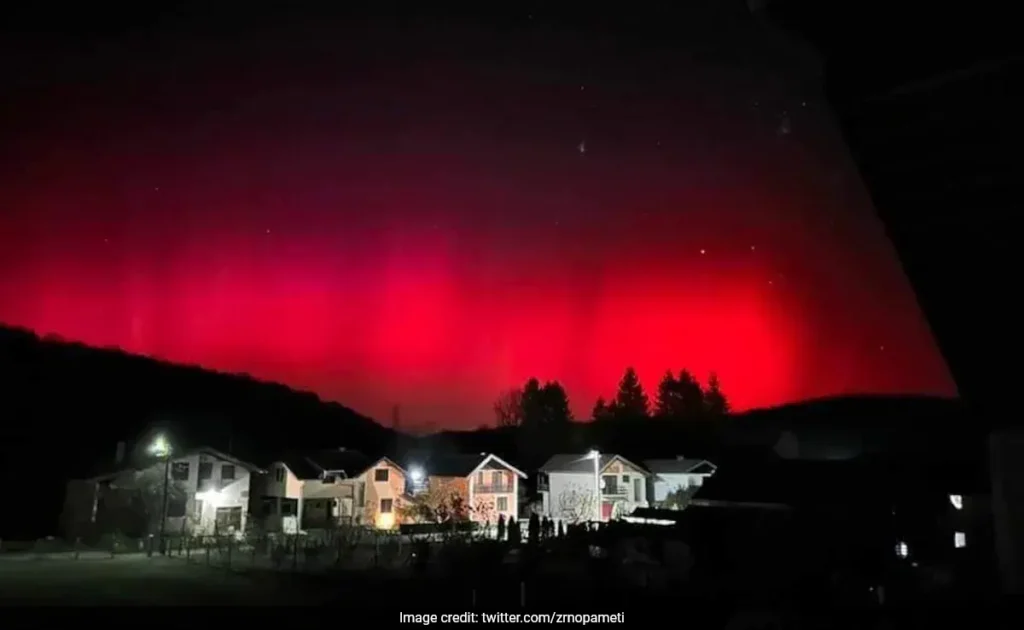The Northern Lights, or Aurora Borealis, have long fascinated those lucky enough to witness them. Recently, this natural phenomenon has reached new levels of intensity due to an extreme solar storm. Hitting Earth, providing skygazers with a dazzling light show. This blog dives into the details of this solar event, explains the science behind the auroras. And discusses the broader implications of such solar storms. Northern Lights
The Science of Solar Storms
To fully appreciate the recent spectacle, it’s essential to understand what solar storms are. Essentially, these are eruptions of massive amounts of energy from the sun, including solar flares and coronal mass ejections (CMEs). These events release particles that are hurled into space, some of which reach Earth.
The Journey of Solar Particles Northern Lights
Once these particles travel the 93 million miles from the sun to Earth, they interact with our planet’s magnetic field. This interaction is crucial as it directs the particles towards the poles. Where they collide with atoms in Earth’s atmosphere, releasing energy in the form of light. This process creates the beautiful auroras seen in the polar regions.
The Role of the Magnetic Field
Our magnetic field does more than just create light shows. It acts as a shield, protecting Earth from the solar wind’s harmful effects. During extreme solar storms, this shield is put to the test as increased numbers of charged particles bombard it. Enhancing the auroras’ visibility far beyond the usual polar regions.

Witnessing the “Extreme” Aurora Northern Lights
This recent solar storm was classified as ‘extreme’ due to the sheer amount of solar particles it ejected. This classification is based on measurements by various space agencies that monitor solar activity. Predicting when and how these solar events will affect Earth.
Global Sightings
Typically, the Northern Lights are best viewed in high-latitude regions such as Scandinavia, Canada, and Alaska. However, due to the extreme nature of this solar storm, the auroras have been visible much farther south than usual. Delighting people across more temperate latitudes who rarely experience this phenomenon.
The Visual Experience Northern Lights
For those who witnessed this event, the skies lit up with dynamic colors, primarily shades of green and pink, swirling and dancing across the night sky. The visual impact is not just beautiful but also a reminder of our planet’s dynamic nature and its interactions with the broader cosmos.
Effects on Modern Life
While the beauty of the Northern Lights is undeniable, extreme solar storms can have disruptive effects on Earth:
- Satellite Operations: High-energy particles can interfere with the operation of satellites, affecting navigation and communication systems.
- Power Grids: There is a risk of damage to electrical power grids, particularly in high-latitude regions, which can lead to widespread power outages.
- Radio Communications: Solar storms can also affect radio frequencies, impacting airline communications, especially on polar routes.
Research and Monitoring
Given these potential impacts, significant efforts are made worldwide to monitor solar activity:
- Space Weather Monitoring: Agencies like NOAA and NASA continuously monitor space weather, providing essential alerts that help mitigate potential damage.
- Scientific Research: Ongoing research aims to better understand solar storms and improve predictions about their occurrence and potential effects.
The Bigger Picture Northern Lights
This event serves as a vivid reminder of the larger forces at play in our solar system. The sun, while essential for life on Earth, is also an active star with its dynamics that can significantly influence our technological society.
Looking Forward
As we advance technologically, our ability to predict and prepare for solar events will become even more crucial. Investments in better monitoring technologies and international cooperation in space weather research are vital for protecting our increasingly technology-dependent civilization.
A Celestial Reminder
In conclusion, the dazzling display of the Northern Lights triggered by the recent extreme solar storm serves as a reminder of our place in the universe. It highlights the beauty and power of natural phenomena and underscores the need for vigilance and preparedness in the face of these celestial events. As we continue to gaze at the night sky in wonder, we are reminded of the delicate balance we must maintain with the cosmic forces at play. Northern Lights
Inspired by Al-Jazeera News and read more Articles Here, Read Previous Also
